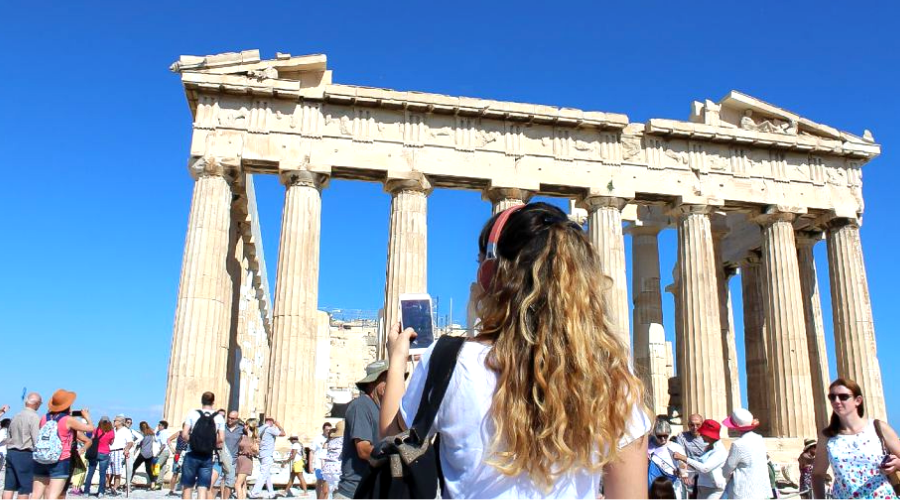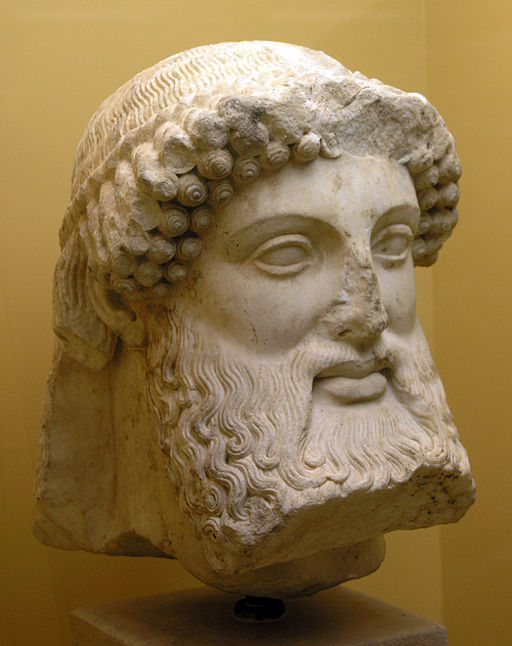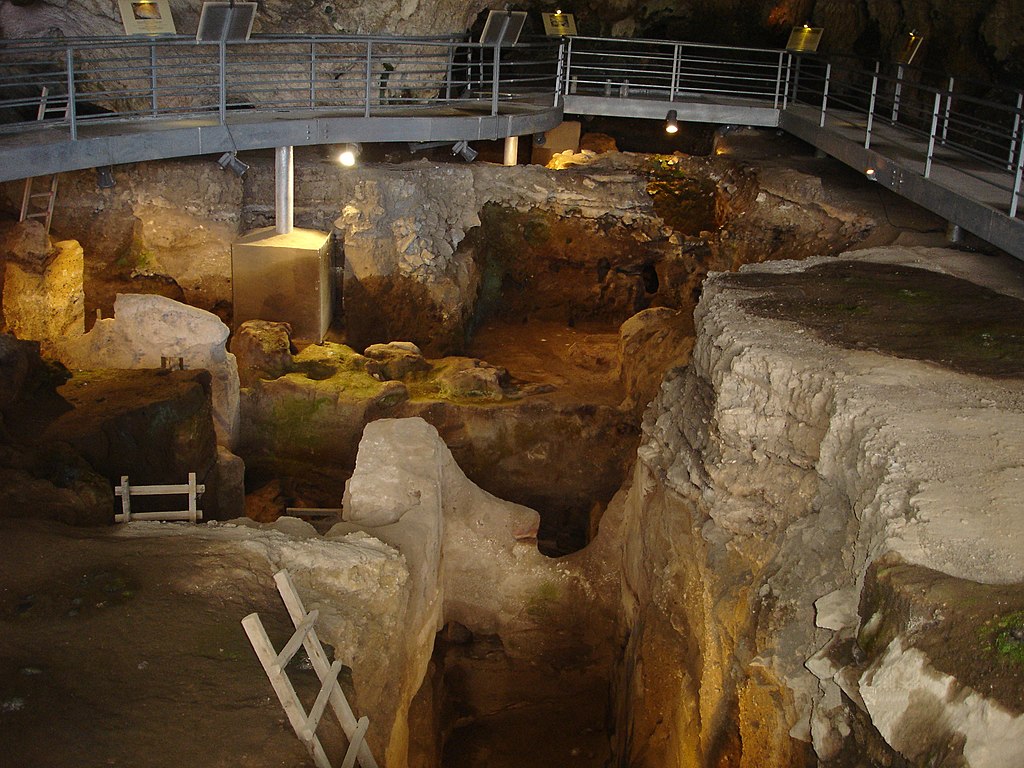10 Ancient Greek Discoveries That Took Archaeologists by Surprise.
Discoveries in Ancient Greece hold a mysterious key. Join us to uncover the secret that few know. Begin your quest!
Ancient Greece’s Astonishing Secrets
Ancient Greece, with its rich history and culture spanning over 3,000 years, has always been a treasure trove for archaeologists. Within its borders lie countless mysteries and astonishing discoveries that continue to captivate and astonish experts. In this journey, we’ll explore the top 10 archaeological finds that have left archaeologists and historians utterly shocked and fascinated.
The Decapitated Head of Hermes – A Mysterious Discovery in Athens.
The Decapitated Head of Hermes – Athens’ Enigmatic Find
In the year 2020, a troublesome time filled with adversity, a routine repair to a city sidewalk in Athens revealed a jaw-dropping surprise. From beneath the pavement on fashionable Iolo Street emerged the giant stone head of Hermes, the Greek god known as the messenger.
This massive head bore the signature swirling beard, scornful lips, and blank pupil of Hermes, a deity revered for centuries in the bustling city of Athens. But why was it buried there for so long? The answer remains a mystery. Some speculate it was repurposed as a wall to support water pipes, a sacrilegious act in ancient Athens where statues of Hermes protected travelers at crossroads.
In 404 BC, Spartan invaders may have separated the head from its body, leaving us with a puzzling question – where is the rest of the statue? This discovery exemplifies Greece’s ability to continually surprise us with its spectacular and sometimes eerie treasures.
 The Official Ticketing Site for Acropolis Tickets online | GUIDE 2024
The Official Ticketing Site for Acropolis Tickets online | GUIDE 2024
Before Purchasing from the official website of the Greek government Please Note
The Athenian Curse Jar – A Haunting Discovery Beneath Athens.
The Athenian Curse Jar – Unveiling Ancient Rituals
In 2006, American archaeologist Marcy Handler delved deep beneath the Athens Agora, the central marketplace of ancient Greece. There, she unearthed a 2,300-year-old jar that would send shivers down the spines of those who unraveled its secrets.
Inside the jar lay a dismembered chicken and a coin, but it was the inscriptions that sent shockwaves through the archaeological community. The names of 55 targeted individuals were scratched on its surface, accompanied by a ritual curse. This ritual bore striking resemblance to modern practices of binding spells against enemies.
The chicken’s head and legs had been pierced with nails, designed to bring bad luck or harm to the cursed individuals. The words “we bind” beside the names were meant to paralyze the enemy. The coin served as payment to the spirits for carrying out the curse.
The existence of the Athenian curse jar provides compelling evidence that sympathetic magic, involving animal sacrifice, was practiced fervently in ancient Greece, shedding light on their mysterious rituals.
Byzantine Era Brain Surgery – A Medical Marvel of Ancient Greece.
Byzantine Era Brain Surgery – Ancient Medicine’s Intriguing Puzzle
In the year 2020, a team of anthropologists embarked on an extraordinary journey at the Polio Castro dig in Dasos. What they discovered left them astounded and raised intriguing questions about ancient medicine.
Among the remains of 10 individuals, four women and six men, one skull from the 4th century AD stood out. It bore the marks of an incredibly complex neurosurgery that surpassed modern knowledge of the human brain. This revelation tantalizes scientists, sparking debates about the possibility of ancient doctors receiving guidance from higher beings or even visits from advanced physicians from the distant future.
This discovery showcases the remarkable advancements in medicine that were taking place in Byzantine-era Greece, leaving us to wonder about the knowledge they possessed.
Theopetra Cave in Thessaly – A Neolithic Dwelling Frozen in Time.
Theopetra Cave in Thessaly – Neolithic Life Unveiled
Travel back 130,000 years to the Middle Paleolithic period and picture yourself in a 5,380-foot limestone cave with 43 fellow Neolithic humans. Here, in the Theopetra Cave in Thessaly, your tribe cultivated wheat, barley, olives, and wild pears. About 11% of your diet consisted of deer, wild boars, bears, hares, and badgers. You also raised sheep, goats, cattle, and pigs, making you a true carnivore.
The Theopetra Cave, known as the oldest human dwelling ever discovered, provides a window into the lives of these ancient people. Excavations since 1987 have revealed their affinity for dogs, honey, and jewelry. This weatherproof cavern even boasts the world’s first movable wall, allowing early humans to shut out the cold during the last ice age.
The Mystery of Broken Goddess Idols at Keros Island.
Broken Goddess Idols from Keros – Enigma of the Early Bronze Age
Imagine yourself in 2750 BC, embarking on a pilgrimage to the sacred hillside of Cavos on Keros Island. As you disembark from your boat, you’re met with a breathtaking sight – hundreds of spouting fountains lined with doll-sized figurines and marble drinking cups.
These figurines and cups were offerings to a mysterious goddess, yet her identity remains unknown. In 1976, archaeologists stumbled upon Kavos, discovering shattered cups, broken figurines, and dry fountains. Over the next two decades, thousands of headless goddess figures were unearthed, many ranging in size from tiny to that of a small child.
The meaning behind these mutilated figurines and the force that deliberately shattered them remain shrouded in mystery, leaving us to wonder about the ancient rituals that unfolded on Keros Island.
Mycenae’s Golden Treasures – Wealth Beyond Imagination.
Mycenae’s Golden Treasures – The Riches of Circle A and B
In 1876, German archaeologist Heinrich Schliemann made a discovery that would shake the archaeological world. Beneath the city of Mycenae, he unearthed a grave circle, known as Circle A, containing the largest single deposit of gold ever found in history.
This treasure trove included jewelry, weaponry, and a 33-pound death mask. In 1952, a Greek archaeology team discovered more riches in an area called Circle B, including items made from exotic materials like amber, glass, ostrich egg, silver, and ivory.
These opulent finds raise questions about the identity of the individuals who accumulated such wealth. Mycenae, once considered relatively poor, underwent a transformation, with theories suggesting figures like Agamemnon, the Greek leader of the Trojan Wars, may have been responsible.
Nestor’s Cup – A Goblet of Ancient Legend and Humor.
Nestor’s Cup – A Goblet of Ancient Legend and Humor
In the year 1950, an English archaeologist explored the ancient Greek colony on the isle of Pithakausei. Among the human remains, they discovered a unique artifact – Nestor’s Cup.
This ancient ceramic cup was adorned with intricate black geometric designs, but its inscription is what truly captivates. It humorously declares, “I am Nestor’s cup, good to drink from. Whoever drinks from this cup empty straight away, desire for beautiful, crowned Aphrodite will cease him.”
These lines are a playful reference to Nestor, the legendary king of Pylos in Homer’s Iliad. Nestor allegedly drank from this cup to cure his impotence and make him more attractive to the ladies. Beyond its humor, Nestor’s Cup is significant for bearing the earliest-known Greek alphabet writing.
The Hydraulis of Dion – An Ancient Musical Marvel.
The Hydraulis of Dion – Ancient Greece’s Musical Innovation
In 1992, after a decade of flooding, the ancient city of Dion, home to the Temple of Dionysia, was finally drained. Among the archaeological treasures found, one stood out – the hydraulis, an ancient water organ.
Originally constructed in 3 BC by Stastibius, this precursor to the modern church organ featured a keyboard and 40 pipes. However, it had a unique characteristic – notes would play continuously until water pressure diminished, making it more of a coral noise maker than a traditional instrument.
The hydraulis provides a fascinating glimpse into the musical innovations of ancient Greece, showcasing their creativity and ingenuity.
Delphi’s Mystical Prophecies – The Breath of Apollo.
Delphi’s Mystical Prophecies – The Enigmatic Oracle of Greece
In the 8th century BC, the Temple of Apollo at Delphi was shrouded in fumes emanating from natural springs beneath it. The priestess, Pythia, entered a trance-like state, her appearance and demeanor dramatically transformed.
Virgil described her as “neither her face nor hue went untransformed.” In this state, Pythia channeled the words of Apollo himself, delivering prophecies that could not be ignored. But what fueled these mystical utterances?
In 1892, French archaeologists investigated the hot springs beneath the temple and discovered ethylene gas. This gas induces euphoria, delusions, and altered states of consciousness. Was Pythia’s prophecy the result of this gas-induced trance, or did she indeed possess a divine connection to Apollo?
Delphi’s mysteries continue to intrigue, offering a glimpse into the spiritual practices of ancient Greece.
Join us as we continue our exploration of astonishing discoveries in ancient Greece.
The Wonders of Ancient Greece Unveiled
From the decapitated head of Hermes to the enigmatic Antikythera Mechanism, and the mystical prophecies of Delphi, we’ve embarked on a journey through the most astonishing discoveries in ancient Greece.
These revelations not only shock archaeologists but also invite us to explore the depths of human history and innovation. They remind us that ancient Greece was a cradle of civilization, a place where science, art, and spirituality intertwined in extraordinary ways.
As we conclude this exploration, remember that Greece’s story is far from over. Ongoing excavations and new discoveries promise to reveal even more mysteries and treasures in this captivating land.
If you’re inspired to delve deeper into Greece’s ancient wonders, consider exploring its archaeological sites firsthand. You can find the best tours and tickets at the most affordable prices through our partner sites like GetYourGuide.com, Viator.com, and Tiqets.com.
So, take the plunge into Greece’s rich history, and let these shocking discoveries be just the beginning of your own adventure in this timeless land.
 Before you buy tickets, read the guide for 2024. Click Here
Before you buy tickets, read the guide for 2024. Click Here







